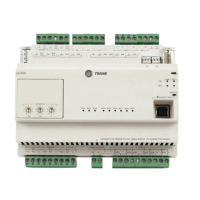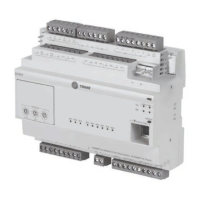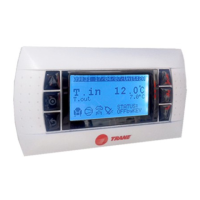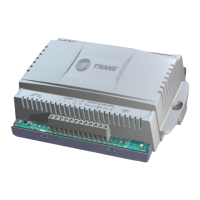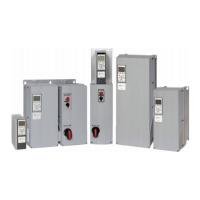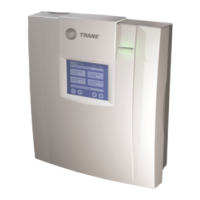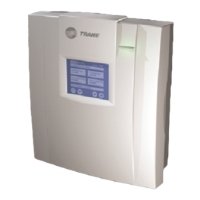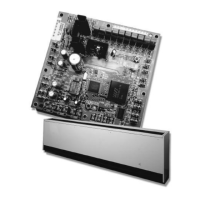96
No. Description Warning Alarm Trip Locked
1 Under 10 Volts (10 VOLT LOW) X
2 Live zero fault (LIVE ZERO ERROR) X X
4 Mains phase imbalance (MAINS IMBALANCE) X X X
5 Voltage warning high (DC LINK VOLTAGE HIGH) X
6 Voltage warning low (DC LINK VOLTAGE LOW) X
7 Overvoltage (DC LINK OVERVOLT) X X
8 Undervoltage (DC LINK UNDERVOLT) X X
9 Inverter overloaded (INVERTER TIME) X X
10 Motor overloaded (MOTOR TIME) X X
11 Motor thermistor (MOTOR THERMISTOR) X X
12 Current limit (CURRENT LIMIT) X X
13 Overcurrent (OVERCURRENT) X X
14 Ground fault (EARTH FAULT) X X
15 Switch mode fault (SWITCH MODE FAULT) X X
16 Short circuit (CURR.SHORT CIRCUIT) X X
17 Serial communication timeout (STD BUSTIMEOUT) X X
18 HP field bus timeout (HPFB TIMEOUT) X X
19 Fault in EEPROM on power card (EE ERROR POWER) X
20 Fault in EEPROM on control card (EE ERROR CONTROL) X
22 Auto motor adaptation fault (AMA FAULT) X
29 Heat-sink temperature too high (HEAT SINK OVERTEMP.) X X
30 Motor phase U missing (MISSING MOT.PHASE U) X
31 Motor phase V missing (MISSING MOT.PHASE V) X
32 Motor phase W missing (MISSING MOT.PHASE W) X
34 HPFB communication fault (HPFB COMM. FAULT) X X
35 Out of frequency range (OUT FREQ RNG/ROT LIM) X
37 Inverter fault (GATE DRIVE FAULT) X X
39 Check parameters 104 and 106 (CHECK P.104 & P.106) X
40 Check parameters 103 and 105 (CHECK P.103 & P.106) X
41 Motor too large (MOTOR TOO BIG) X
42 Motor too small (MOTOR TOO SMALL) X
60 Safety stop (EXTERNAL FAULT) X
61 Output frequency low (FOUT < FLOW) X
62 Output frequency high (FOUT > FHIGH) X
63 Output current low (I MOTOR < I LOW) X X
64 Output current high (I MOTOR > I HIGH) X
65 Feedback low (FEEDBACK < FDB LOW) X
66 Feedback high (FEEDBACK > FDB HIGH) X
67 Reference low (REF. < REF. LOW) X
68 Reference high (REF. > REF. HIGH) X
69 Temperature auto derate (TEMP.AUTO DERATE) X
99 Unknown fault (UNKNOWN ALARM) X X
Warnings and Alarms
The table below lists the drive fault messages and indicates whether a
warning, alarm, or trip-lock occurs. Wherever an X is placed under
both warning and alarm, this means that a warning precedes the alarm.
An alarm always precedes, or simultaneously accompanies, a trip-lock.
A trip causes the drive to suspend operation by cutting off power to the
motor. A trip-lock requires that input power to the drive be removed, the
cause of the fault corrected, and the input power restored in order to
reset the drive.
A trip can be reset in any one of the following ways:
1) Manual reset by pressing the RESET key on the keypad
2) A digital input through a digital input terminal
3) Serial communication command
4) Automatic reset
Automatic or manual reset may be selected in parameter 400, Reset
Function. Auto reset will not restore a trip-lock. The number of reset
attempts may be selected or infinite, which allows continuous attempts. A
timer between attempts can be set in parameter 401.
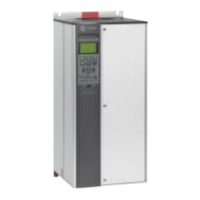
